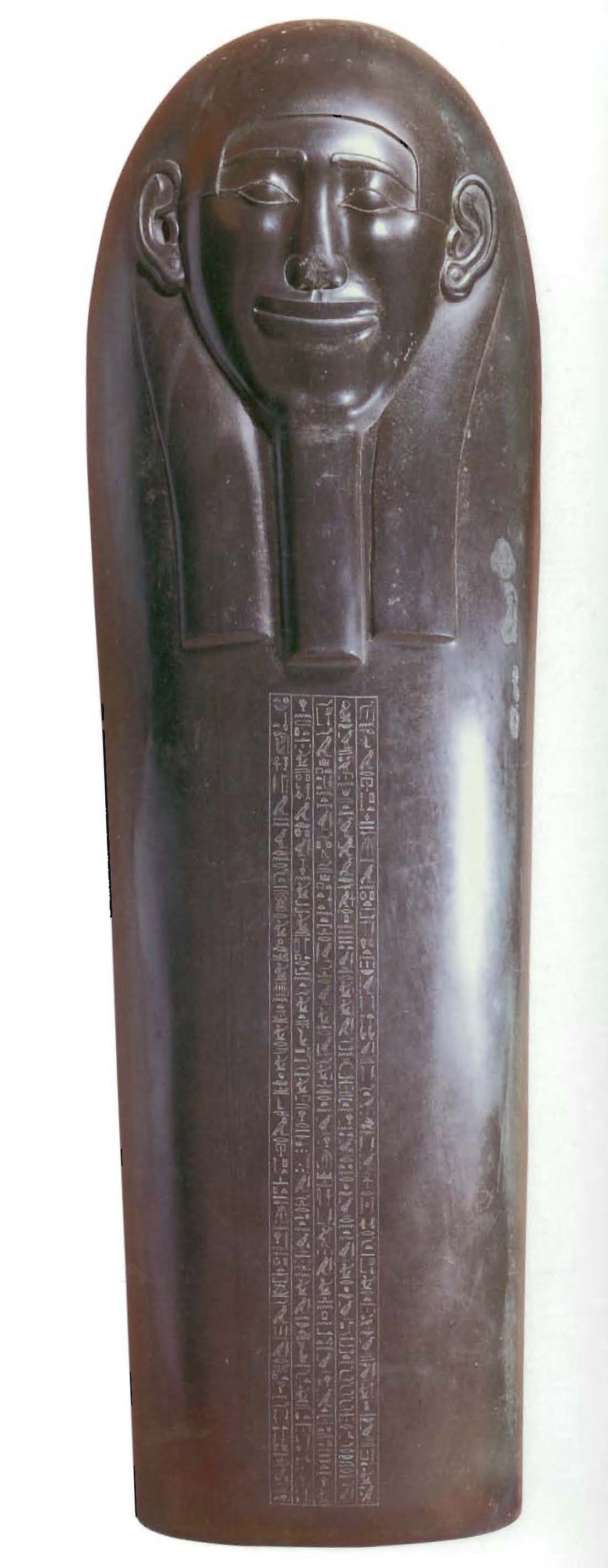Lid of the Sarcophagus of Ptahhotepthe, c. 500 BCE
Lid of the sarcophagus of the treasury overseer, Ptahhotep, from Giza
A whole chain of large shaft tombs began to be made around 600 BCE and continued into the Ptolemaic period. This monument comes from one such tomb at Giza where the shaft contained several burials. It is an interesting variation on the earlier anthropoid sarcophagus lids where the face was comparable to that of a statue. Here the face is very stylized and looks more like a mask. That was probably the inspiration of this form, and the fact that the owner of the sarcophagus was one of the Egyptian “collaborators” who served under the Persian kings of the 27th dynasty is almost certainly unconnected with the strangeness of the face. On wooden anthropoid coffins the face piece was often manufactured separately and attached to the lid as a fairly flat mask (the term sometimes used to describe such and item is “coffin mask”). It seems that the face on this stone sarcophagus imitates such a flat mask on a wooden coffin. The five columns of text inscribed on the lid contain a spell taken from the Book of the Dead.
Ashmolean Museum, Oxford.
Malek, Jaromir, Egypt; 4000 years of Art. London- Phaidon Press, 2003.




